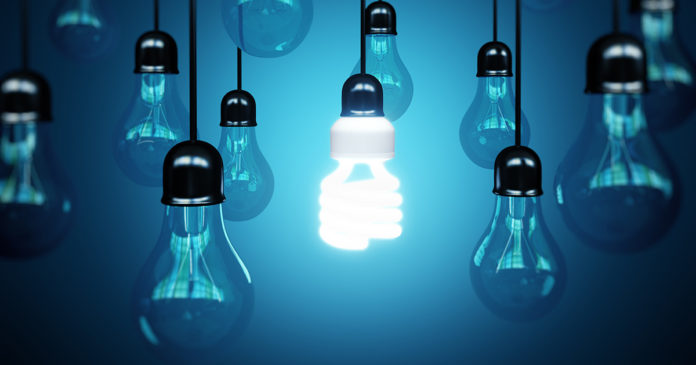The United States has about 18 million apartments, condos and other dwellings in buildings of 5 units or more, representing nearly $22 billion a year in energy costs for building owners and residents alike. Some 16 million of those are occupied by renters, who make up a group of people that are particularly hard for utilities to reach.
Unlike single-family homes, apartments can’t each have their own wireless smart meter—concrete walls and sheer distances make apartments very tricky wireless targets. They’re also disconnected in terms of cost-and-benefit equations, given that renters have no incentive to invest in efficiency improvements in properties they don’t own.
Similar barriers exist for many for landlords and property owners, who may or may not see the value in spending on efficiency that lowers their tenants’ utility bills. Building owners also may or may not be planning to sell their apartment buildings or portfolios at the right opportunity—a disincentive to efficiency investments that require years to realize a return.
Despite all these challenges, there is a lot of room for improvement in multifamily housing efficiency, according to a report by the American Council for an Energy-Efficient Economy (ACEEE). In fact, if existing best-practice utility efficiency programs could be expanded nationwide, ACEEE and report partner CNT Energy sees a $3.4 billion-per-year benefit—and that’s not counting improvements yet to come.
ACEEE lays out nine strategies that it says have worked in the real world, and cites case studies from utility projects such as Arizona Public Service’s Multifamily Energy Efficiency Program, as well as partner CNT Energy’s efficiency programs aimed at low-income communities, an important subset of the multifamily market. Here are the nine most important points:
Segment the multifamily market.
This isn’t a call to renter customer segmentation, as you might think, but rather a reminder to know your local apartment stock. “Segmenting the multifamily market into several common local building types, ages, and split incentive structures will increase program efficiency and improve service,” the report states. Using that information, “utilities can choose the most promising building types and develop a strategy to address their barriers to program participation.”
Overcome split incentive barriers.
The main point ACEEE makes here is that building owners only replace their core HVAC systems, major appliances and such once every 10 to 20 years, mainly when they break down. That moment is the time at which split incentives can be overcome with targeted utility efficiency incentives, if they can come “either at the time the building owner is making a replacement or in support of an early replacement.” The report cites California’s Multifamily Energy Efficiency Rebate program (MEER), and Austin Energy’s Power Saver Multifamily Rebate program as two good models for making that happen.
Coordinate gas and electric programs.
Plenty of markets have electricity, gas and water provided by different companies. But it’s rare that an efficiency opportunity in one of those realms doesn’t have an impact on, or potential to be improved through coordination with, the other two. That can be as simple as streamlining rebate applications processes (so that customers don’t have to fill out forms in triplicate) to actually designing efficiency programs that combine gas and electric in a single install, as Indianapolis Power and Light Company and Citizens Gas have done.
Choose the most appropriate delivery mechanism.
ACEEE lays out two paths to market here, a “broad trade ally network” approach, and a “one-stop shop model that centralizes program administration and provides a single point of contact for the building owner.” Or, you can combine the two, as the New York State Energy Research and Development Authority (NYSERDA)’s Multifamily Performance Program has done, with a centralized intake that farms out projects to a network of program providers.
Integrate comprehensive and direct-install solutions.
On one side, you’ve got the comprehensive HVAC and building shell-type upgrades, and on the other, you’ve got mass market light bulb giveaways and Energy Star appliance rebates. ACEEE argues for combining the two, for several reasons. First, it’s important to capture the feedback from one efficiency drive on others —” Reductions in usage from the direct install program and building envelope upgrades can immediately be taken into account as the implementers plan and install HVAC and domestic hot water improvements,” for instance. Second, direct-install is a good way to get on-the-fence homeowners to start getting involved in efficiency.
Make rebates accessible and easy.
Enough said—utilities have to stop forcing renters and landlords to jump from program to program to get the biggest bang for their buck.
Partner with sources of attractive multifamily financing.
Local housing authorities, development agencies and other government or non-profit entities are great partners, the report finds. CNT Energy has partnered with Chicago’s Community Investment Corp., and New Jersey’s Housing Finance Agency has partnered with state utility Public Service Electric and Gas (PSE&G), to name two examples.
Provide follow-up and aggregated building energy use data.
This is the part where the utilities show landlords what’s in it for them. Efficiency upgrades should lead to “direct savings on utility bills, reduced maintenance costs, and decreased tenant turnover,” the report states, but owners want to see those metrics, and have them verified. That’s going to grow increasingly important as they face new efficiency benchmarking and disclosure mandates, as is happening in cities from New York to San Francisco, and points in-between. Green button data and other forms of normalized, open energy information-sharing will play an increased role in this task.
Engage with key multifamily industry players.
While most U.S. rental housing is owned by small-scale family or local businesses, there’s a whole ecosystem of multifamily industry partners to work with. That includes affordable housing developers like Enterprise Community Partners and Mercy Housing, real estate management companies and public housing entities, as well as housing advocates who speak for tenants. Contractors and efficiency services companies are important partners, as are the public and private financial backers of multifamily projects.
Author Jeff St. John













